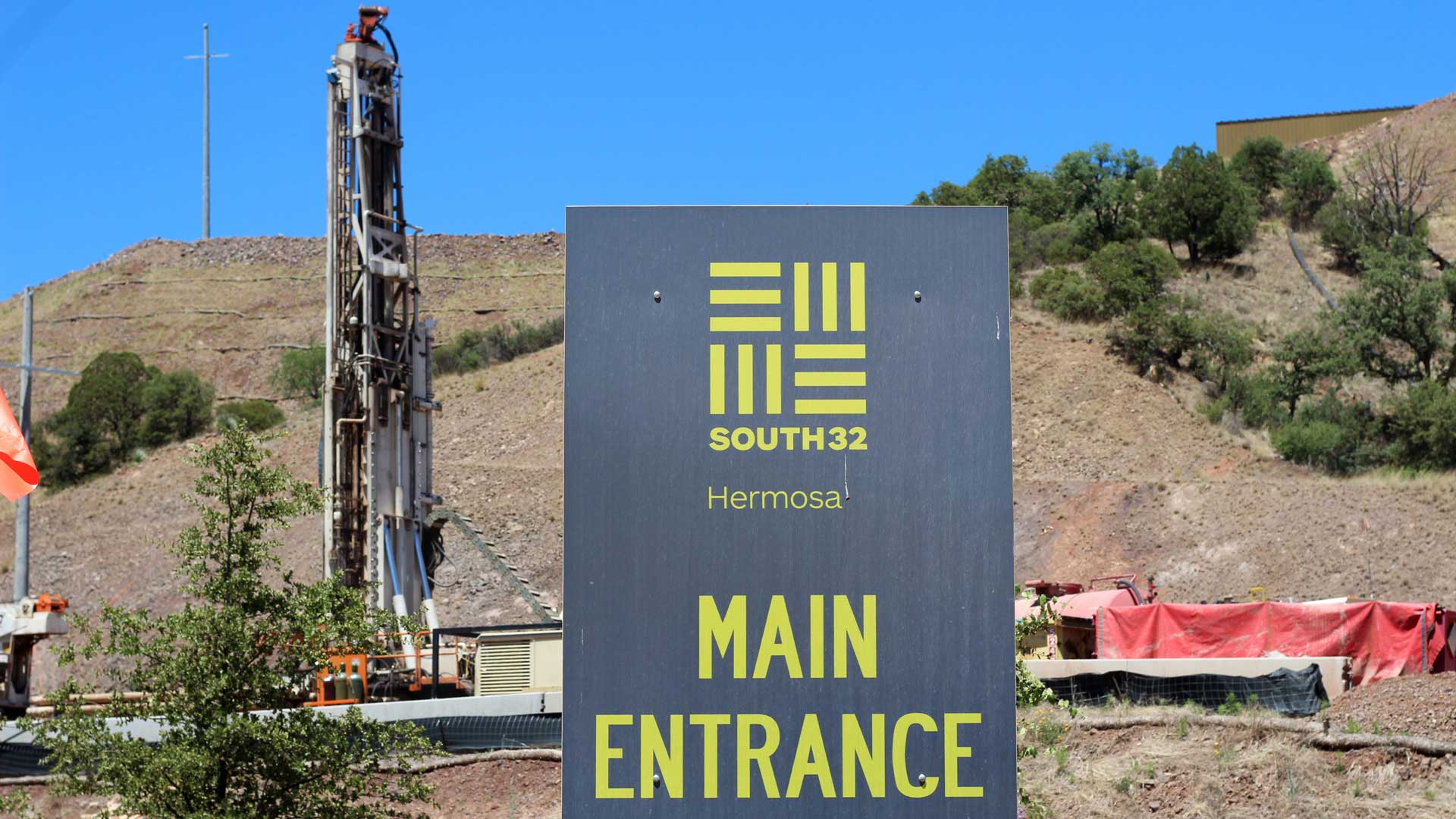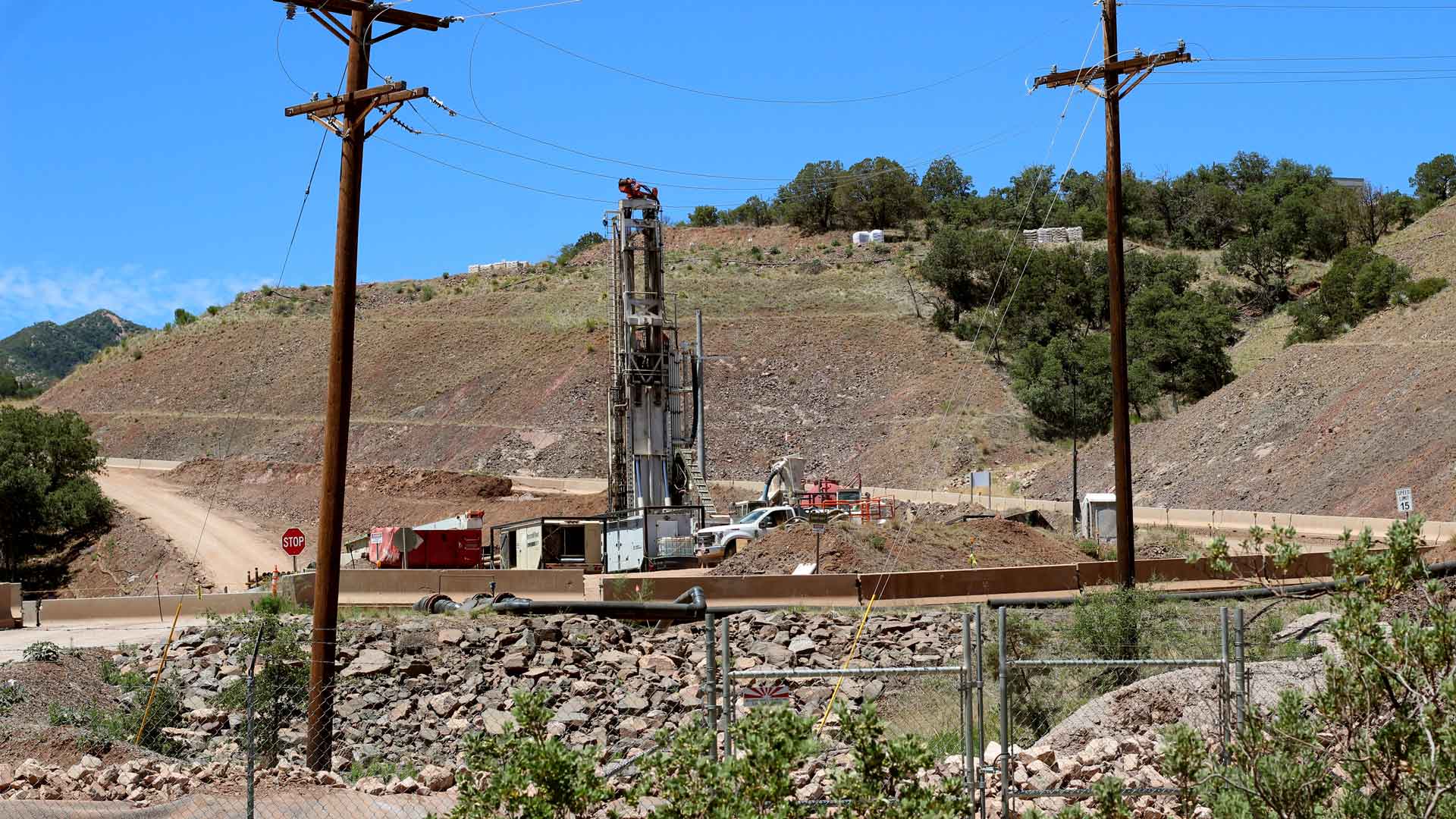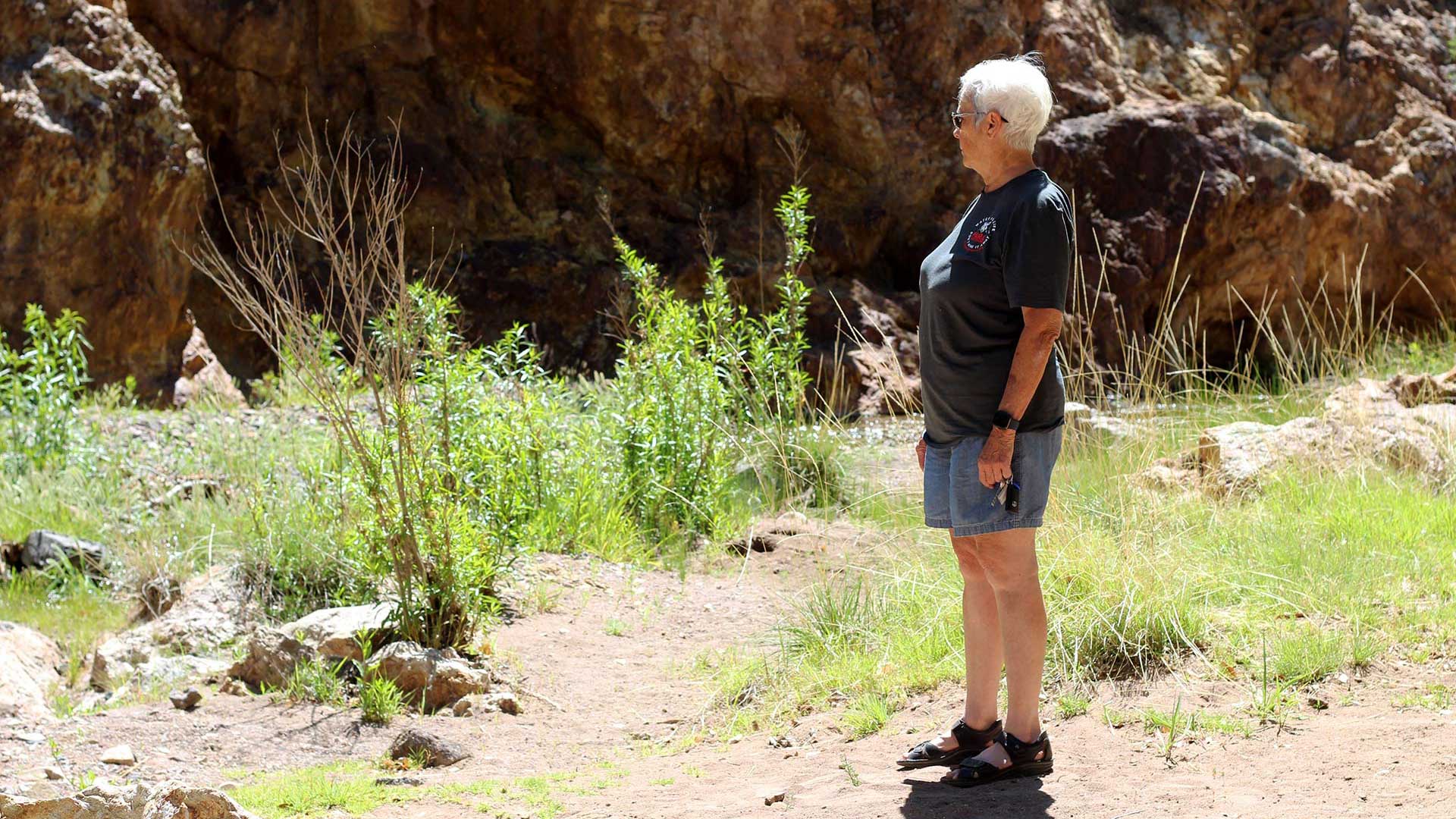 The entrance of the South32 Hermosa mine site, a critical minerals project that looks to source manganese and zinc.
The entrance of the South32 Hermosa mine site, a critical minerals project that looks to source manganese and zinc.
In May, the global metals and mining company South32 qualified for an expedited permitting process for their Hermosa project in the Patagonia Mountains.
The underground mine hopes to provide two federally designated critical minerals: manganese and zinc.
Sixty days later, the Federal Permitting Improvement Steering Council (FPISC), an independent federal agency, presented the project’s timetable that details its permitting process.
The recently published timetable includes final completion dates for federal environmental reviews and other milestones over the next three years.
South32 will need to present an environmental impact statement, while the Coronado National Forest will begin the National Environmental Protection Act (NEPA) process along with other federal and nonfederal parties.
The Hermosa Critical Minerals Project has been showcased as the first of its kind; it’s spearheaded by the U.S. Forest Service and other federal agencies and highlights the Biden-Harris Administration's efforts to focus on the development of domestically sourced-materials.
Hermosa President Pat Risner said it's been over 50 years since manganese was produced in North America and calls this project a real game-changer.
“That generates security benefits for our nation for the resources that it requires to really deliver on those decarbonisation targets,” Risner said.
The two critical minerals are both essential for powering the shift to clean forms of transportation and power and will also produce byproducts of silver and lead.
 South 32 Hermosa Project in the Patagonia Mountains. The mine development project earned a FAST-41 federal designation which streamlines its permitting process.
South 32 Hermosa Project in the Patagonia Mountains. The mine development project earned a FAST-41 federal designation which streamlines its permitting process.
Hermosa aspires to set a standard for sustainable mining.
“We’re designing this as a very small footprint mine, so an underground mining method that minimizes surface disturbance less than 600 acres of total disturbance to mine both of these resources,” Risner said.
The project is being designed as the first netzero mining operation as well as the first dry stack tailings facility in the United States. Part of that is a multilayered liner system that is low-moisture, that feeds excess water into a water treatment plant.
Risner said the project would also benefit the community of Santa Cruz County, which meets criteria for the FAST-41 program– the Obama-era Fixing America’s Surface Transportation Act or (FAST Act), which looks to create a more transparent and timely process for critical infrastructure projects.
Under NEPA, there’s a $200 million investment threshold that must be met.
“We announced last year that the initial investment would be about $1.7 billion to get the first production which is about eight times the largest investment ever in Santa Cruz County,” Risner said.
The project would create about 2500 jobs in the county.
“That’s equal to almost $200 million a year of new labor income, which if you look at that, that 200 million a year is equal to about 16% of the total labor income in the county today,” Risner said.
Despite promising economic stimulation, local environmental groups are concerned about the project.
Watchdog organizations have raised questions about the project’s proximity to the fragile ecosystem of the Patagonias, which are home to over 100 federally threatened, endangered and sensitive species in the area.
The mountain range is a well-known wildlife corridor that has seen jaguars and ocelots traveling to and from Sonora, Mexico. It is an area with vast biodiversity.
President of the Patagonia Area Resource Alliance (PARA), Carolyn Shafer said the group formed in 2011, in response to the announcement made by the former owner of the Hermosa Project, regarding the reactivation of mining in the Patagonias. She’s served as a board member since 2012.
The primary work of the grassroots organization is to preserve and protect the mountains and all that inhabit it.
“There was historical mining in the Patagonia Mountains for 100 years, but that mining is dramatically different from the mining that is proposed now,” Shafer said.
For the first 10 years of PARA’s existence, members were “dealing” with the exploratory company that was developing the Hermosa Project, Arizona Mining Inc.
In 2018, the mine was bought out by South32 for a record deal of over $2 billion.
Shafer, who has lived in the area for 26 years, said she’s concerned about the groundwater.
 President of the Patagonia Area Resource Alliance (PARA), Carolyn Shafer, stands in one of her favorite places along Harshaw Creek in Patagonia, Arizona. Shafer has lived in the community for about 26 years.
President of the Patagonia Area Resource Alliance (PARA), Carolyn Shafer, stands in one of her favorite places along Harshaw Creek in Patagonia, Arizona. Shafer has lived in the community for about 26 years.
“What we do know is that they are permitted by ADEQ to discharge up to 6.4 million gallons of treated water, per day into the Harshaw Creek,” Schafer said.
South32 obtained an Aquifer Protection Permit (APP) by the Arizona Department of Environmental Quality (ADEQ), which allows them to do so.
“The mining company tried to tell everybody, ‘oh it’ll just sink it,’ but it won’t sink it because of the kind of area we have,” Shafer said.
Shafer said that the groundwater is shallow and the excess water could have adverse outcomes in the area.
Per the recommendation of a local hydrologist, the community has asked for reinjection of the treated water in the San Rafael Valley, allowing it to flow through Harshaw Creek.
“Would it be better for the environment and our system? Yes it would and then we wouldn’t be worried about drying out the mountain,” Shafer said.
Shafer said that while she can’t forecast the future, she guarantees it will be better because of the work PARA and other environmental organizations are doing.
“It is already better than it would have been if we hadn’t been speaking up,” Shafer said.

By submitting your comments, you hereby give AZPM the right to post your comments and potentially use them in any other form of media operated by this institution.